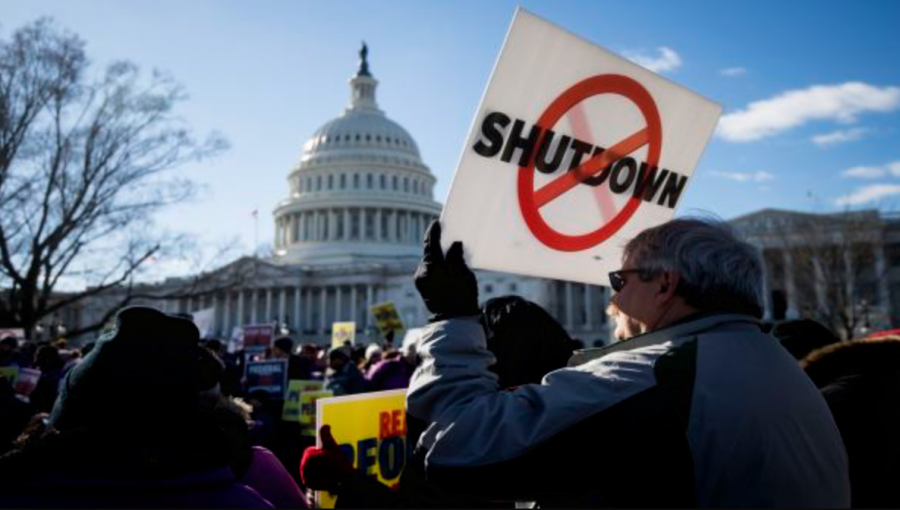After Record-Long Shutdown, Gov’t Reopens And Nat’l Emergency Declared
On December 11th, 2018, the US federal government shut down due to President Trump’s disagreement about an appropriations bill to fund the majority of the federal government.
Government shutdowns have become an abnormally normal part of the American political arena over the past thirty-five years. The first happened in 1980, when Democrat Jimmy Carter held the White House. The Federal Trade Commission was shut down for one day, with 1600 workers furloughed, or temporarily laid off. Three happened under Reagan, and in 1995, a shutdown caused 800,000 workers to be furloughed for five days. The previous record holder for the worst shutdown stripped 284,000 workers of a paycheck for 21 days. America went without a government shutdown until 2013—during that year, gridlock between Republicans and Democrats forced a sixteen-day shutdown that furloughed 800,000 workers and required an additional 1.3 million required to work without pay.
The scale of this government shutdown was unprecedented. About 760,000 federal employees were not receiving paychecks, and more than half of them were required to keep working. Thousands were applying for state unemployment benefits. Many more were taking other emergency measures to survive and burning through their savings quickly to keep the lights on. The costs were equally astonishing: furloughed workers must be back paid upon their return (for work that was never done, meaning a loss for the government) at a cost of between $10-20 million an hour. For perspective, the one-day shutdowns of the Reagan years cost approximately $65 million each in back pay. If one drastically increases the scale and multiplies that daily cost for 34 days, one begins to get a picture of the impact of this shutdown. Worse, the White House estimated a national GDP growth decrease of 0.13 percent for every week the shutdown continued, translating to a cost of billions in economic growth potential.
Meanwhile, as the economy—workers struggled to make ends meet and the Transportation Security Administration pondered a strike—Republicans and Democrats slugged it out in Washington D.C. The Trump Administration, supported by Senate Republicans led by Majority Leader Mitch McConnell (R-KY), maintained that the Senate would not pass and the President would not sign any budget bill without $5.7 billion for a border wall between the US and Mexico. On the other hand, Democrat Speaker Nancy Pelosi (D-CA) and her Democratic House would not consider budgets funding the wall, even after the Trump Administration offered (paltry, according to Democrats) concessions with DACA citizenship regulations.
Nancy Pelosi’s refusal to allow Trump to broadcast the State of the Union from the halls of Congress until the shutdown ended and polls indicating that a majority of Americans blamed Trump for the shutdown brought about an end to the shutdown on January 25th. A bill funding the government—without wall funding—until February 15th was passed unanimously by the House and Senate and backed by President Trump. President Trump signed a funding bill on February 15th, which funds the government through September 30th and gives Trump $1.375 billion to construct border fencing along 55 miles of the US-Mexico border. At the same time, Trump declared a national emergency over the border, which sequesters $3.7 billion in funds to begin construction of a physical barrier. Already, sixteen states have sued the Trump Administration over the declaration for various reasons. The result of this legal battle remains to be seen.

Ben Feinstein is a proud American, a history buff, and a debate and international affairs writer for The Keynote. He plans to serve in the government...

